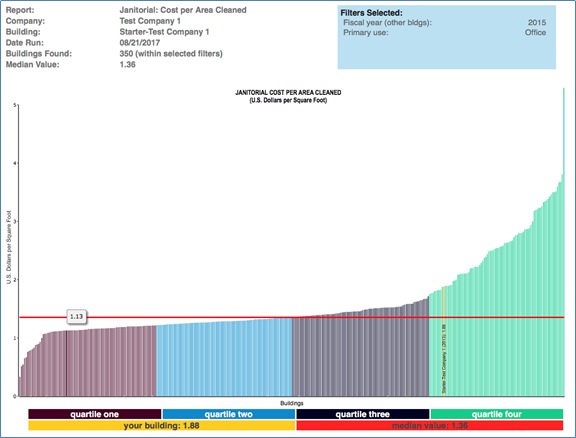August 2017 – Minimum wages are going up in many locations, and that means janitorial costs will be rising too. Most FMs are probably contracting for more than the minimum, but the increase flows thru, more or less proportionately, to the janitorial workers too. You’re probably contracted under a multi-year agreement, but the impact will be felt with higher attrition rates right away and price increases when the contract is up for renewal.
For FMs this issue is going the wrong way as many are under pressure to find better ways to provide better, cost effective janitorial services that are oriented towards providing a clean, healthy and safe workplace. Budgets are tight, and more than half of FMs in a recent poll described the janitorial quality of their facility as “moderately dingy or dingy.”
Often it seems that Janitorial budgets are often the first things to be cut:
- Skip cleaning (e.g., every other day instead of every day)
- Reduce carpet cleaning to every other year
- Eliminate trash pickup and ask the occupants to carry it to a central station
- Reduce restroom cleaning frequency
- And on and on.
There is only so much that can be cut and still have a healthy, safe and good-looking facility that meets employee requirements. Many clients and attendees at conferences readily admit that their facilities are in poor condition for janitorial services and would like to do something to improve the user experience. There just should be a better way than cutting and reducing the frequency of service or asking the users to help with cleaning tasks. Does this description seem like your janitorial group? Then let’s look at ways this can be changed.
Janitorial benchmarking can help you understand how your costs compare with others in your peer group and may be able to help you justify additional budget funds. Most FMs are familiar with benchmarking concepts. You enter your cost data, occupancy, and areas. From this data, a good benchmarking system should be able to provide a normalized cost comparison for janitorial services. This kind of benchmarking system shows where you stand compared to your peers.
The chart shown in Figure 1 below shows how much the janitorial services cost on a normalized basis compared with other office facilities. There are 350 buildings in this peer group with a median janitorial cost per cleanable area of $1.36 and a first quartile performance of 1.22 per cleanable area. Our facility Janitorial cost, shown in yellow, is above the median and is in the fourth quartile with a cost of $1.88 per cleanable area.

Figure 1 – Janitorial Cost per Cleanable Area
Filters: Office Facilities
Provided courtesy of FM BENCHMARKING
A facility manager or janitorial manager looking at this chart would probably ask the question, “What do I do to get better, reduce costs, and improve the overall cleanliness of my facility?” The costs are relatively high, and we know that janitorial costs are mostly labor, so we should be looking at options that would better utilize the workforce. Let’s see how we compare with the workforce utilization rate.
The chart shown in Figure 2 below shows the area cleaned per janitorial worker compared with other office facilities. There are 349 buildings in this peer group with a median area cleaned of 19,943 cleanable SF/janitorial worker and a first quartile performance of 22,000 cleanable SF/janitorial worker. Our facility performance, shown in yellow, is below the median, in the third quartile with a performance of 18,333 cleanable SF/janitorial worker.

Figure 2 – Area Cleaned per Janitorial Worker
Filters: Office Facilities
Provided courtesy of FM BENCHMARKING
So we may be a little high on the number of janitorial workers but let’s look next at what best practices could be implemented to improve the performance.
A good benchmarking tool will provide you with the information to answer that question. Figure 3 identifies the first seven best practices from the FM BENCHMARKING application for Janitorial services. There are 27 best practices in the survey but the first seven should provide a good sense of how the application can be used to “tune up” the Janitorial performance. Best practices are a way to compare what others are doing in your quartile and the next better performing quartile.
From observation, we already think the janitorial staff spends too much time running around from job to job. Recordkeeping is a problem and much of the time they do not seem to know which area to clean or when it was last cleaned.
Consider JB03 in Figure 3 above, “All requests, complaints, and audits are responded to within 24 hours.” We have not implemented this best practice at our facility; yet, third quartile participants have implemented this best practice in 78% of their facilities.
Carefully evaluate JB04 in Figure 3 above, “Cleanable areas are defined and understood….” Without a good understanding of what areas should be cleaned this is a hit-or-miss issue and user satisfaction will suffer. The percentage implementing this practice increases 12% from the fourth to third quartile.
These are just a few examples but the technique can be applied to all janitorial best practices. Of course, which best practices have the most impact will depend on each building’s unique characteristics—that is the point of using filters to make sure you are looking at similar buildings. Clearly, using the best practices tables is a good way to improve the overall quality of the service delivery. Armed with best practices, we can carefully analyze which best practices would have the highest benefit to improving janitorial services. By applying these, you are sure to improve your performance.
